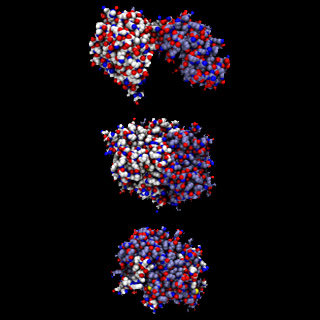
Previously, it was predicted that a PGK enzyme shaped like Pac-Man goes through a dynamic hinge motion to perform its metabolic function. On mimicking the cell interior with computer models it was discovered that the enzyme supposedly functions in a Pac-Man state itself. The enzyme seems to be 15 times more active in the tight spaces of a crowded cell.
“Imagine you’re walking down the aisle toward an exit after a movie in a crowded theatre. The pace of your motion would be slowed down by the moving crowd and narrow space between the aisles. However, you can still maneuver your arm, stretch out and pat your friend on the shoulder who slept through the movie. This can be the same environment inside a crowded cell from the viewpoint of a protein, the workhorse of all living systems. Proteins always ‘talk’ to each other inside cells, and they pass information about what happens to the cell and how to respond promptly. Failure to do so may cause uncontrollable cell growth that leads to cancer or cause malfunction of a cell that leads to Alzheimer’s disease. Understanding a protein inside cells – in terms of structures and enzymatic activity – is important to shed light on preventing, managing or curing these diseases at a molecular level,†stated Margaret Cheung, assistant professor of physics at UH.
Therefore, in cell-like conditions the function of a protein may be more active and efficient than in a dilute condition, like a test tube. Through the witnessed impact of a crowded cell on the structure and dynamics of proteins, scientists can allegedly design appropriate therapeutic means to work better inside cells and avoid diseases as well as boost human health. Investigators performed computer simulations with the assistance of supercomputers.
The research was published in the Journal of the Proceedings of the National Academy of Sciences.
